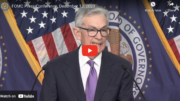Money supply is one way investors evaluate the market. You see, stock investing is not just about picking the right companies. It’s also more than reading chart formations and patterns. It’s also about getting the pulse on the economy and knowing how macro economic forces like monetary policy affects the financial markets. This is much larger than just trying to find good stocks to invest in. That actually starts with understanding how the economy is fairing as a whole.
Many investors and analysts watch the money supply closely. That is because it can be a leading indicator for inflation, which is not good when it happens too fast. Essentially, when the money supply is larger than the supply of good and services, you can expect inflation. That is because there is more money out there than to buy stuff with. So then people simple start charging more for their goods and services.
If you’ve done any kind of stock market trading in any emerging market in the last 20 years, you have probably seen this. It’s basically monetary policy gone awry. It especially happens when central banks start to just print money with no or little regard the the money supply. When this happens, you see rampant inflation.
M1 and M2 Money Supply
There are two categories of money supply. M1 is basically all the money that is in circulation. It includes monies going around to pay for stuff, like your light bill. It’s also the money that is in your checking accounts. Let’s just call this liquid cash, money that is actively circulating in the economy.
Then there is M2. This is M1 plus the following things. It includes money in savings accounts and money market accounts.
Fed Policy
Although M1 and M2 money supply is really important to track, the Fed no longer has targets for it anymore, not since 2000. They just decided it’s better to just leave it along and just focus on interest rates in relation to economic growth and expansion, inflation and deflation. To make along story short, they made some mistakes trying to micromanage the money supply back in the 1970’s, which caused the recession in the 1980’s. They just decided interest rate management was more important and money supply management hurt more than it helped.
Even the best investments will be affected by the Fed’s monetary policy and money supply. Although the Fed no longer plays an active role in trying to control the money supply, it is still vital that you understand this concept.







